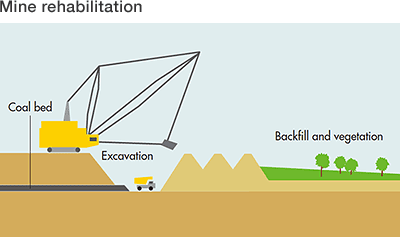Biodiversity : Initiatives
Initiatives
Examples of Protection/Conservation Activities through Business Operations
Land Rehabilitation at Post-mining Sites
In developing natural resources, companies need to consider environmental impacts in relation to areas such as biodiversity, forests, and water. The local community must also be duly engaged as an important stakeholder. MC ensures that its mining activities in Australia are conducted in harmony with the natural environment and local communities with utmost care and attention, before, during and after the mining operations.
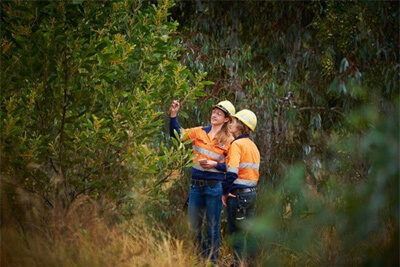
Moving into a Resource Business
MC established Mitsubishi Development Pty Ltd
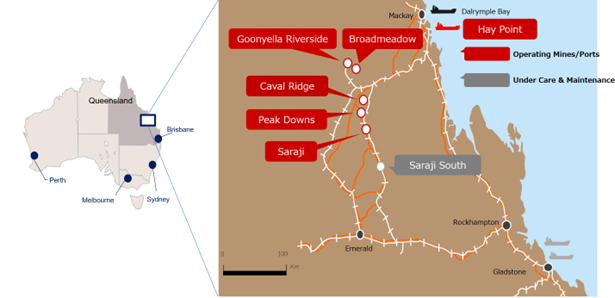
The metallurgical coal operations of the BHP Mitsubishi Alliance (BMA) are located in Queensland, Australia. BMA produces high-quality metallurgical coal used for steelmaking. BMAʼs product is the raw material for producing cokes which, when charged into a blast furnace with iron ore, acts as a reducing agent to produce crude iron. The metallurgical coal produced by BMA is supplied to customers in approximately 30 countries around the world. BMA is the world's largest seaborne supplier of metallurgical coal.

Rehabilitation of Large-scale Open-cut Mines
BMA acts as responsible miner and ensures its mine closure plans take into account social expectations and environmental regulatory requirements for rehabilitation. While complying with laws and regulations, BMA strives to minimize its impact on the environment and society by developing appropriate mine closure plans, and by implementing rehabilitation projects based on environmental impact reports and review by field experts and authorities. As part of annual renewal of long-term production plans for each site, BMAʼs planning and investment models are updated including all necessary rehabilitation and closure costs.
The majority of BMA’s coal operations are open-cut mines, a method requiring overburden removal to depths up to 200+ meters in order to expose the underlying coal seams.
The mining process at an open-cut mines start with removal and stockpiling of the topsoil. The area where BMA mines are situated is not heavily forested as it has a dry tropical climate. The topsoil of about 30-40cm depth is removed and preserved in stockpiles and covered with a mixture of grass and scrub to preserve it for later use in rehabilitation. After this process is complete, overburden removal and subsequent coal mining are carried out, leaving behind a large pit. Once the coal has been mined, the overburden that was moved and placed in spoil dumps during mining operations is profiled. The profiled dump surface is then covered with topsoil mixed with rock mulch and planted with seeds of indigenous grasses, trees and shrubs.
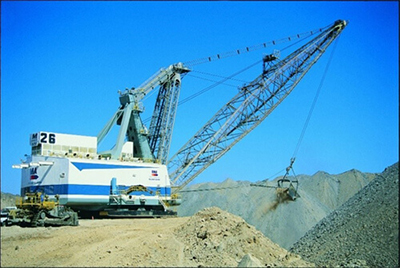
After rehabilitation works have been completed, site recovery is monitored to confirm whether the final landforms are stable, water runoff is of acceptable quality and vegetation is taking root. BMA employs ecological specialists for the planning, rehabilitation, and surveying stages to supervise the rehabilitation process.
-
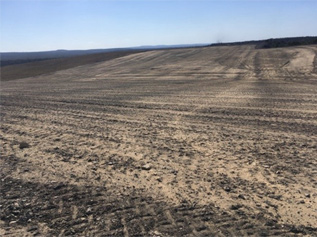
Before Rehabilitation -
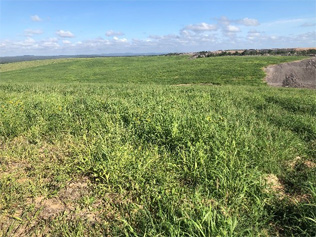
After Rehabilitation
